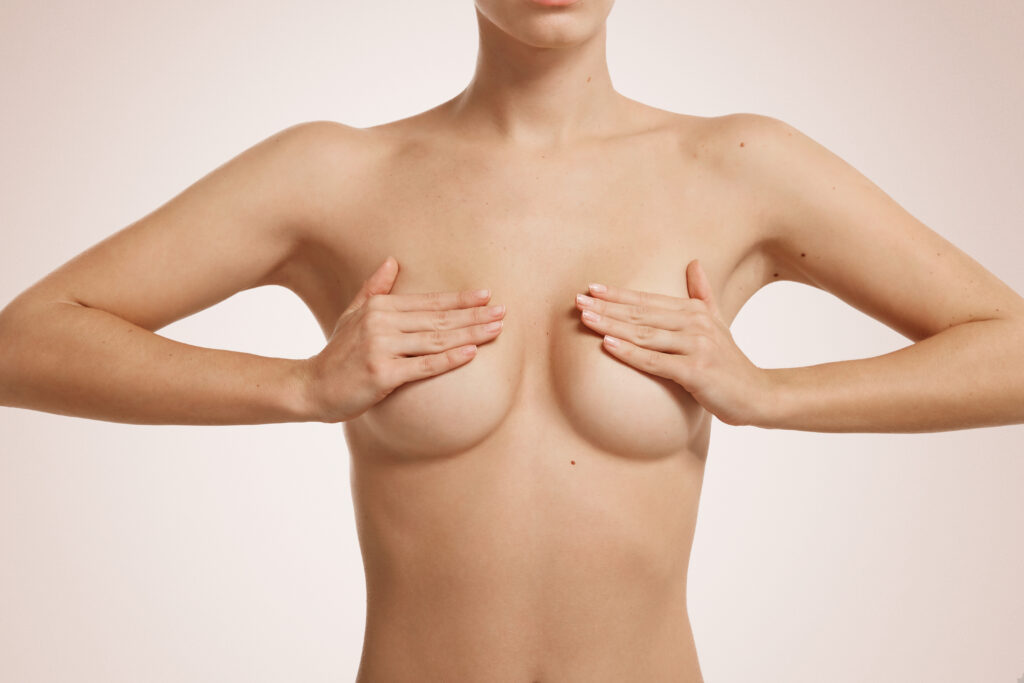Medical doctors and Surgeons
Tuberous Breast: a common but often overlooked anomaly

Tuberous breast is a congenital condition affecting many women, influencing the shape of the breast and, consequently, body perception. Despite being relatively common, affecting about 27% of the female population, it often goes unrecognized, even by those who have it. Today, plastic surgery offers effective solutions to correct it and restore harmony to the body. Dr. Rosa Salzillo, a reconstructive and aesthetic plastic surgeon at the Campus Bio-Medico in Rome, discusses the condition.
What Is a Tuberous Breast?
Tuberous breast, explains Dr. Salzillo, «is a benign condition, but it can significantly impact the appearance of the breast and, as a result, have profound psychological effects on how patients perceive themselves».

In a typically developed breast, the mammary gland is evenly distributed across four quadrants around the areola-nipple complex. «In a tuberous breast, however, the shape is essentially narrow and elongated, which is why it is called ‘tuberous, – the specialist adds -. The issue arises from the formation of a fibrous ring behind the areola, which obstructs the natural growth of the mammary gland. This growth restriction concentrates the tissue behind the areola-nipple complex, leading to the characteristic shape anomal».
The severity of the condition varies: in mild cases, only the lower quadrants of the breast are affected, while in more severe forms, all quadrants are involved, creating significant asymmetry between the breasts.
«You start to notice it during breast development,- says Dr. Salzillo -. Some young women might see that one breast is slightly different from the other, and as development progresses, the difference can become more pronounced».
However, before considering surgical intervention, doctors prefer to wait for full maturity. «In adolescents who have not yet completed development, the most common approach is to wait until breast growth is fully stabilized», the surgeon explains. Only after the age of eighteen, or when growth has remained stable for at least a year, is surgical correction considered.
Despite its prevalence, the origins of tuberous breasts remain uncertain. «It is not a genetic malformation; rather, it occurs during breast development», the expert clarifies. Research has yet to pinpoint the exact causes, but it is certain that the condition is not inherited.
Surgical Correction Techniques
Surgical solutions vary depending on the severity of the condition and the patient’s preferences. «Techniques must be tailored to the characteristics of the mammary gland and the patient’s individual wishes», emphasizes Dr. Salzillo.

The most common procedure involves releasing the fibrous ring behind the areola-nipple complex, allowing the breast tissue to expand naturally. «There are breast remodeling techniques that work well when there is a sufficient amount of glandular tissue to reconstruct a breast with balanced proportions across all four quadrants», the specialist explains. In cases where the glandular volume is insufficient, implants may be used.
A less invasive alternative is lipofilling, a procedure that involves transferring fat tissue from other areas of the body to the deficient areas of the breast. «It can be used alone when minor corrections are needed, but when performed as a standalone technique, multiple sessions, typically at least two, are often required to achieve the desired result».
Psychological Impact and Male Breast Anomalies
Tuberous breasts do not pose health risks, but it has significant emotional and psychological effects. The condition can greatly impact the self-esteem of those affected. «Many patients feel embarrassed wearing swimsuits or experience discomfort in intimate settings due to the unusual shape of their breasts or the noticeable asymmetry between them», Dr. Salzillo explains.
Although primarily a female condition, men can also present similar anomalies. «In men, it often manifests as glandular hypertrophy, known as gynecomastia, – the doctor notes -. Occasionally, within the context of male breast hypertrophy, a tuberous breast deformity can occur, which can also be corrected, though it is less common».Today, thanks to advancements in plastic surgery, it is possible to correct tuberous breasts with safe and personalized techniques. «My goal is to help women feel comfortable in their own bodies, offering customised and safe solutions for every need», concludes Dr. Salzillo.




































